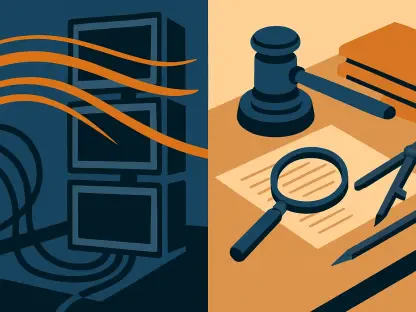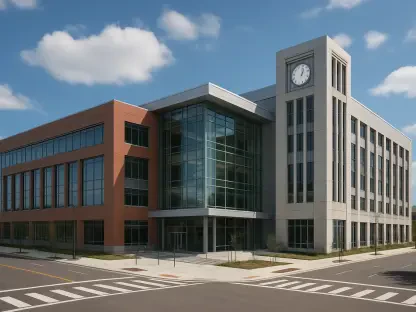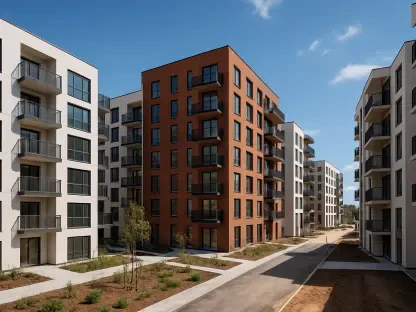Ontario’s Bill 17, formally known as the Protect Ontario by Building Faster and Smarter Act, has stirred considerable debate over its potential impacts on Toronto’s renowned green building regulations. The legislation, expedited to royal assent without the usual public hearings, has drawn attention for potentially restricting municipal powers to enforce local building standards. This legislative move brings forward implications for Toronto’s environmentally conscious initiatives, such as the Toronto Green Standard (TGS). Historically, Toronto’s authority to enact stricter regulations than the provincial Building Code was possible as long as it did not conflict directly with the code, enabling the city to be a forerunner in green urban development.
Challenges to Municipal Authority
Legislative Restrictions on Municipal Bylaws
The crux of the controversy surrounding Bill 17 lies in its stipulation that municipalities cannot pass by-laws superseding the Ontario Building Code. This provision directly threatens Toronto’s Tier 1 Green Building requirements, although it permits non-mandatory tiers that act as incentives rather than directives. This development has stirred significant apprehension among stakeholders like The Atmospheric Fund (TAF), which has been vocal about potential setbacks to Toronto’s sustainability goals. Despite this, Toronto city staff have asserted that the new Act does not completely obstruct their ability to enforce the TGS on new building projects, a stance that intertwines with ongoing legal contests regarding the TGS.
The situation becomes even more complex given legal hurdles already challenging the TGS, presenting a tangled web of regulatory and legal dynamics. Toronto remains steadfast in maintaining its regulatory framework, highlighting ongoing procedures that embody the city’s commitment to green building standards. However, Bill 17’s limitations pose questions of municipal versus provincial jurisdiction, raising concerns about who holds the ultimate authority in determining environmentally responsible construction standards. The room for maneuvering under this new legal framework remains narrow, with Toronto needing to navigate these restrictions carefully to preserve its leadership in green urban design.
Concerns Over Transparency and Access to Information
Another significant implication of Bill 17 is the potential restriction of municipal access to critical building information, an issue highlighted by groups like the Canadian Environmental Law Association (CELA). They argue that the Act might still diminish municipalities’ ability to enforce nuanced standards that address local economic, social, and environmental objectives without imposing specific construction criteria. CELA underscores that while municipalities can pursue broader goals like climate change mitigation, curtailing access to detailed construction data can handicap their enforcement capabilities.
The lack of transparency is not merely an administrative hurdle; it significantly impacts how cities like Toronto can plan for sustainable growth. Access to comprehensive data is essential for creating effective and adaptable environmental strategies, and the current opacity could impede innovation in green building practices. The debate centers on the need for a transparent framework that supports municipalities’ environmental objectives while aligning with provincial standards. This tension calls for a collaborative effort to ensure that the pursuit of environmental responsibility and innovative building practices are not stymied by opaque legislative processes.
The Need for Balanced Legislative Control
Ensuring Local Environmental Initiatives
Bill 17’s enactment has led to a broader dialogue on the necessity of balanced legislative control, one that accommodates local environmental initiatives while adhering to standardized provincial policies. Advocates for green building standards emphasize the importance of empowering municipalities to implement customized strategies that reflect local needs. Toronto’s proactive approach to green building has been a model for sustainable urban development, demonstrating that local insights can drive significant environmental benefits.
The push for legislative equilibrium is not merely about maintaining municipal autonomy; it is crucial for crafting strategies that effectively integrate environmental and climatic considerations into urban planning. The collaborative approach between provincial guidelines and municipal initiatives could foster an environment where innovation and regulation coexist constructively. A recalibration of the law’s application could potentially safeguard Toronto’s capacity to lead in sustainability while ensuring compliance with overarching building codes.
Promoting Collaboration for Sustainable Growth
The overarching consensus among stakeholders indicates a pressing need for cooperative frameworks that allow Toronto and other municipalities to pursue ambitious green building endeavors while respecting provincial mandates. Promoting dialogue between provincial and municipal bodies can yield solutions that preserve innovative practices while enhancing regulatory consistency. Establishing clear guidelines can foster an environment where local experiments in sustainability are not only permitted but encouraged, within a harmonious legislative structure.
Moving forward, addressing the inherent tension between local aspirations and provincial controls will be paramount in crafting a regulatory landscape conducive to sustainable growth. Encouraging transparent communication and consultations can ensure that environmental standards are met without compromising municipal autonomy. As the situation evolves, municipalities like Toronto stand at the forefront of pioneering sustainable urban development, serving as a testament to the importance of adaptive and inclusive regulatory practices.
Future Considerations for Green Building Standards
Ontario’s Bill 17, officially named the Protect Ontario by Building Faster and Smarter Act, has become a focal point of controversy regarding its effects on Toronto’s highly regarded green building regulations. The bill was pushed through to receive royal assent, bypassing the usual public consultation process, which has sparked concerns about its implications. Specifically, it may limit the power of municipalities to enforce their own building standards, threatening Toronto’s efforts toward sustainable urban development. Toronto is known for its environmentally friendly initiatives like the Toronto Green Standard (TGS). Historically, the city had the leeway to implement stricter guidelines than those in the provincial Building Code, provided there were no direct conflicts, allowing it to lead the way in green urban growth. This legislative shift could undermine Toronto’s ability to maintain its pioneering role in setting higher environmental standards, raising critical questions about future urban planning and environmental stewardship.









